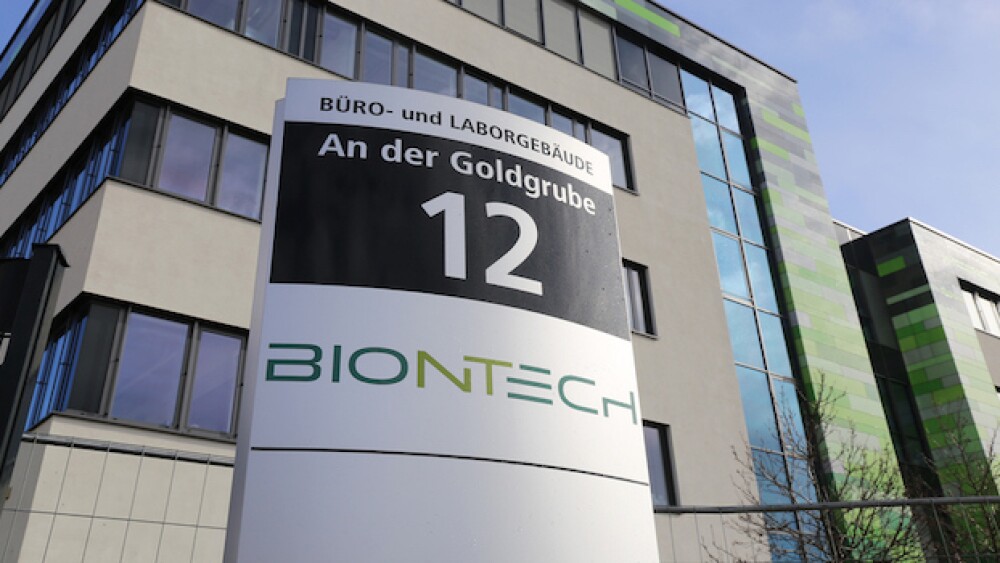iXon Ultra 897 camera from Andor Technology (Andor), an Oxford Instruments company, at the heart of new technique to image single molecules with unprecedented spectral and spatial resolution
24th November 2015, Belfast, UK: A team from University of California, Berkeley, and the Lawrence Berkeley National Laboratory, California, has invented a new technology that combines spectroscopy with super-resolution microscopy to produce the first “true-colour” super-resolution microscope. Called SR-STORM (Spectrally Resolved Stochastic Optical Reconstruction Microscopy), the innovative technique allows researchers to examine cell structures with unprecedented spectral and spatial resolution and enables new ways to study disease processes.
Reporting their discovery in Nature Methods, Professor Ke Xu and his co-authors describe how SR-STORM gives full spectral and spatial information for each molecule and opens the door to high-resolution intracellular imaging of multiple components and local chemical environments, such as pH variations. What’s more, SR-STORM is high-throughput, able to deliver spatial and spectral information for millions of single molecules in about five minutes, compared to several minutes for a single frame of image comprising tens of molecules using conventional scanning-based techniques.
Professor Xu says, “SR-STORM builds on STORM, a super-resolution microscopy method based on single-molecule imaging and photoswitching. We devised a dual-objective system with two microscope lenses facing each other to simultaneously image the front and back of a cell. The single-molecule image collected by one objective lens is dispersed into spectrum while the other image is used for single-molecule localization. Vitally, both images are separately projected onto two different areas of the iXon Ultra 897’s EMCCD detector. This led to the new concept of spectrally resolved super-resolution microscopy, where every molecule is spatially localized to 10-nanometer precision while also being fully resolved spectrally. In this way, crosstalk-free 3D super-resolution microscopy was achieved for four dyes that were only 10 nm apart in emission spectrum.”
“When we looked for detectors capable of providing the speed required for SR-STORM imaging while retaining excellent levels of sensitivity, we selected the Andor iXon Ultra 897 electron multiplying CCD camera. The quality and sensitivity of these cameras, together with the large detector, is ideal for our novel application.”
According to Orla Hanrahan, product specialist at Andor, applications for SR-STORM are likely to be in fundamental research and cell biology, with every chance it will lead to medical applications. “Professor Xu’s work gives us new opportunities to look at cell structures, how they’re built up and whether there’s any degradation of those structures in diseases. Many diseases are caused either by an invading pathogen or degradation of a cell’s internal structure. Alzheimer’s, for example, may be related to degradation of the cytoskeleton inside neurons. The cytoskeleton system is comprised of a host of interacting subcellular structures and proteins, and the team’s technique will enable research on the interactions between these different targets with an unprecedented number of colour channels and spatial resolution.”
Andor’s microscopy systems and scientific cameras address a broad range of optical microscopy techniques including laser spinning disk confocal microscopy, photo-bleaching, activation, conversion and ablation, TIRF, white light spinning disk confocal, calcium ratio imaging, comet assay and bioluminescence.
About Andor
Andor is a global leader in the pioneering and manufacturing of high performance scientific imaging cameras, spectroscopy solutions and microscopy systems for research and OEM markets. Andor has been innovating the photonics industry for over 20 years and continues to set the standard for high performance light measuring solutions, enabling its customers to break new ground by performing light measurements previously considered impossible. Andor’s digital cameras, are allowing scientists around the world to measure light down to a single photon and capture events occurring within 1 billionth of a second.
Andor now has over 400 staff across 16 offices worldwide, distributing products to over 10,000 customers in 55 countries. Andor’s products are used in a wide range of applications including medical research to further the understanding of heart disease, cancer and neuronal diseases such as Alzheimer’s and Parkinson’s disease. Andor also has applications for forensic science and astronomy. Through continuous dialogue with customers and strong teamwork, Andor continues to innovate ground-breaking products that improve the world in which we live.
More information is available at www.andor.com.
About Oxford Instruments plc Oxford Instruments designs, supplies and supports high-technology tools and systems with a focus on research and industrial applications. Innovation has been the driving force behind Oxford Instruments’ growth and success for over 50 years, and its strategy is to effect the successful commercialisation of these ideas by bringing them to market in a timely and customer-focused fashion.
The first technology business to be spun out from Oxford University, Oxford Instruments is now a global company with over 2000 staff worldwide. Its objective is to be the leading provider of new generation tools and systems for the research and industrial sectors with a focus on nanotechnology. Its key market sectors include nano-fabrication and nano-materials. The company’s strategy is to expand the business into the life sciences arena, where nanotechnology and biotechnology intersect.
This involves the combination of core technologies in areas such as low temperature, high magnetic field and ultra high vacuum environments; Nuclear Magnetic Resonance; x-ray, electron, laser and optical based metrology; atomic force microscopy; optical imaging; advanced growth, deposition and etching.
Oxford Instruments aims to pursue responsible development and deeper understanding of our world through science and technology. Its products, expertise, and ideas address global issues such as energy, environment, security and health.




